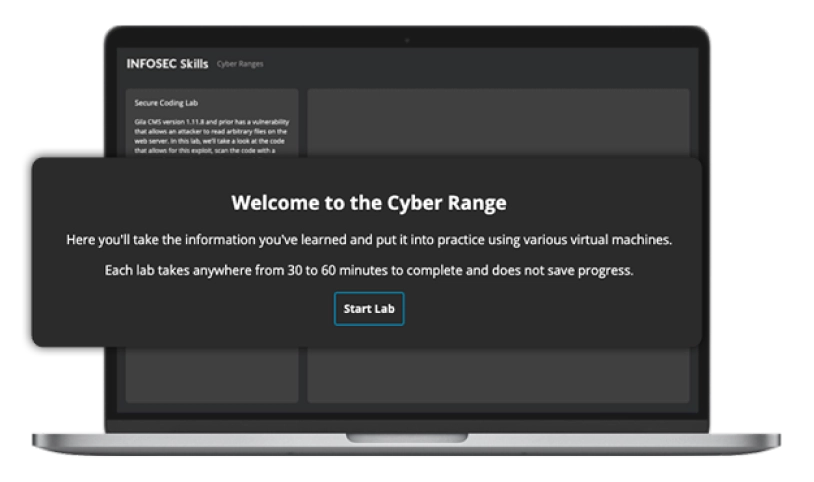
ISACA Certified in Risk and Information Systems Control (CRISC) (2022 Update) Learning Path
20 hours, 47 minutes
Quick facts
About this learning path
-
courses
100% online
-
Duration
20 hours, 47 minutes
-
Assessment
questions
About ISACA Certified in Risk and Information Systems Control (CRISC) (2022 Update)
This certification from ISACA dives deep into managing the risk of information systems. Get ready to traverse the four domains of the CRISC exam — governance, IT risk assessment, risk response and reporting, and information technology and security. Videos and written study materials teach you each concept, then you participate in review questions and activities for each domain. By the end of this learning path, you’ll be ready to ace the CRISC exam with flying colors.
Who this learning path is for
The CRISC certification is a high-paying credential for mid-level professionals looking to take their careers in IT risk management to the next level. It’s ideal for all types of risk management professionals, as it’s the most respected certification focused on governance, risk and compliance. It can especially benefit:
- Information Risk Analysts and related risk professionals, such as risk managers and cyber risk specialists
- Security Managers and other technical professionals tasked with reducing and organization’s risk
- Members of third-party vendor risk management teams
- Any other professional looking to validate their risk management skills
CRISC applicants must have at least three years of work experience in IT risk management and IS control (acquired within the 10-year window before the exam application date) to qualify.
By the end of this learning path, you will:
- Be on your way to passing your exam and earning a CRISC certification, considered by many to be the top certification for governance, risk and compliance
- Be better prepared to validate to employers your comprehensive knowledge in identifying, assessing and mitigating information security risks at the enterprise level
- Understand governance, covering organizational strategy, structure, policies, standards and processes
- Understand enterprise risk management and relevant legal and regulatory requirements
- Master IT risk assessment, including organizational criteria like structure, policies, architecture and technology, and analyzing how likely a risk is and what impact it might have
- Be able to handle risk response and reporting, including enterprise risk response options and third-party risk management, and designing, implementing, testing and analyzing controls
- Know about enterprise architecture, IT operations management, disaster recovery management, data privacy, data protection and business continuity management
Syllabus
ISACA CRISC Practice Exam
Assessment - 75 questions
CRISC Domain 1: Governance
Course - 05:39:00
CRISC Domain 2: IT risk assessment
Course - 04:04:00
CRISC Domain 3: Risk response and reporting
Course - 05:07:00
CRISC Domain 4: Information technology and security
Course - 05:19:00
The details
Learning path insights
How to claim CPEs
Should you complete this learning path, you’ll be able to download a certificate of completion. Use this to claim your CPEs or CPUs.
No software. No set up. Unlimited access.
Skip the server racks and spin up a realistic environment with one click. Infosec Skills cyber ranges require no additional software, hardware or server space so your team can spend less time configuring environments and more time learning. Unlimited cyber range access is included in every Infosec Skills subscription so your team can skill up however they learn best.

Unlock 7 days of free training
- 1,400+ hands-on courses and labs
- Certification practice exams
- Skill assessments
Plans & pricing
Infosec Skills Personal
$299 / year
- 190+ role-guided learning paths (e.g., Ethical Hacking, Threat Hunting)
- 100s of hands-on labs in cloud-hosted cyber ranges
- Custom certification practice exams (e.g., CISSP, Security+)
- Skill assessments
- Infosec peer community support
Infosec Skills Teams
$799 per license / year
- Team administration and reporting
- Dedicated client success manager
-
Single sign-on (SSO)
Easily authenticate and manage your learners by connecting to any identity provider that supports the SAML 2.0 standard.
-
Integrations via API
Retrieve training performance and engagement metrics and integrate learner data into your existing LMS or HRS.
- 190+ role-guided learning paths and assessments (e.g., Incident Response)
- 100s of hands-on labs in cloud-hosted cyber ranges
- Create and assign custom learning paths
- Custom certification practice exams (e.g., CISSP, CISA)
- Optional upgrade: Guarantee team certification with live boot camps
